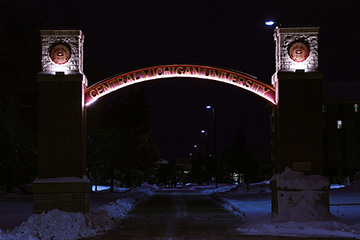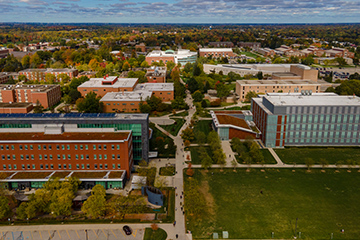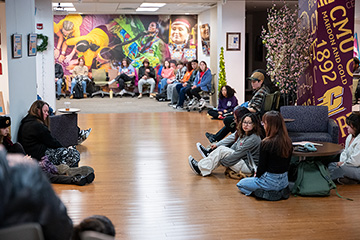Changing minds through the art of animation
NASA grant helps animators communicate climate change’s realities
Animators at Central Michigan University are investigating whether they can help scientists communicate climate change with the general public.
The biggest hurdle is figuring out how to convey the visceral fear that much of the scientific community feels. It’s not something easily expressed through an interpretation of data.
“Their hair is on fire right now, but they can’t communicate that,” said Steve Leeper, a member of the Department of Art and Design faculty. “Art can do that.”
Leeper is working with Lindsay Robertson, a recent graduate of the animation program, to communicate that message through the art of animation. Their project is supported by a grant through the National Aeronautics and Space Administration.
Most students in CMU’s new animation major focus on conventional storytelling, character design and animated performance, hoping to get jobs in the entertainment industry, Leeper said. Animating a public service announcement would lend itself to that approach.
Robertson uses motion and sound to evoke ideas as a form of abstract art, he said. Their approach makes them a good candidate to shape data into a visceral, emotional story.
The goal is an animation that cuts through what the data has to say and conveys a message about the emotional reaction scientists have to what the hard facts tell them.
Communicating the underlying emotional punch is a vital part of getting the message out, he said. On data-intense issues, people can tune out facts. That’s more difficult to do with a message that hits on emotional notes.
“We tend to shut down the bad news,” he said.
Robertson brings some experience using data to create art. They addressed the generational trauma caused by fashion industry messaging about the “ideal body type” in their 2020 thesis “Sourz.” Their 11-minute film animates pages from a fashion textbook.
They have reams of data downloaded from the NASA website, Robertson said. But one of the challenges they face is getting a better grasp of what it all means.
They plan to partner with members of the environmental sciences faculty for that. They’ve held preliminary meetings with Tao Zheng, a faculty member in the Department of Geography and Environmental Studies, to better understand how to interpret the data.
It’ll also help shape how Robertson approaches telling the story through art.
Robertson could draw inspiration from past projects that involved drawing shapes on fabric or using ink on glass. A previous project they animated through those techniques is currently part of an exhibit in Texas.
Input from the scientists they work with will help sharpen their approach to the art underlying their animation project.
A final report is due to NASA early next year, Leeper said. It’s not known what will happen to whatever Robertson produces, but it could live on in its full-length form or snippets of it could be used to underlie other pieces of media.



